If you have planted your garden flowers, shrubs, and trees in rich, amended soil as described in
"Jimmie's Easy Gardening - Part 1", they will look better than most. But if you really want you plants to look vibrant
green and have vigorous growth, you'll want to give them some Spring TLC.
I have found that the "secret" to enabling that Green Opulence is simple: just areate the soil and apply some
decent natural fertilizer followed by mulch in the Spring. Several resons for this:
The past summer's heat and the winter rains have compacted the soil; so your plant's roots could use some fresh air.
Last year's growth sucked up nutrients from the soil.
The mulch you put down last season is now partly broken down and/or blown away.
The plants might be partially smothered in dead leaves, which will invite some undesired insects.
It's actually pretty easy. Here's how.
So here's one of my Shore Pines. Since we get so much rain here on the Oregon coast, the soil is so compacted that water runs off. Also the mulch I put down last season has been whisked away by the shrieking Pacific winds - there's a bit left near the rocks. |
So Step 1 is to spread a natural fertilizer of some kind. I am using Dr Earth's
"Acid Lovers" fertilizer here. The natural type fertilizers have so much more than the synthetics, which are mainly
concentrated Nitrogen that will blast the plants all at once and can even burn them if over-applied. |
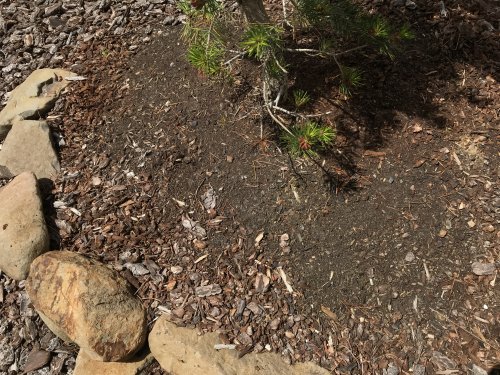 |
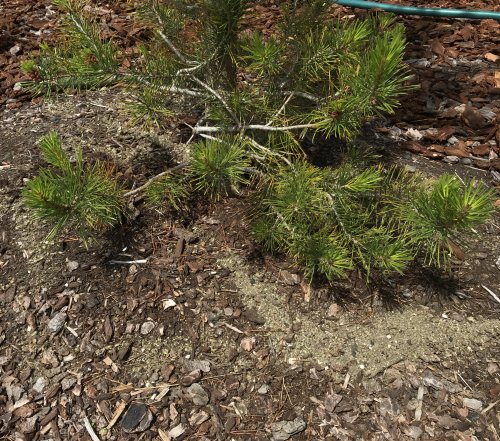 |
Step 2 is to break up the hardened soil. Do this lightly with a small straight weeding
tool. You want to open the soil a bit so the roots can get some air, but not too much so as to break up the surface
feeder roots. |
And Step 3 is to spread mulch on top. Mulch has huge benefits. It keeps the soil
cooler during the hot summer, and retains moisture so the plants won't dry out so much between waterings.
It breaks down during the summer and adds organic material to loosen up clay-type soils. |
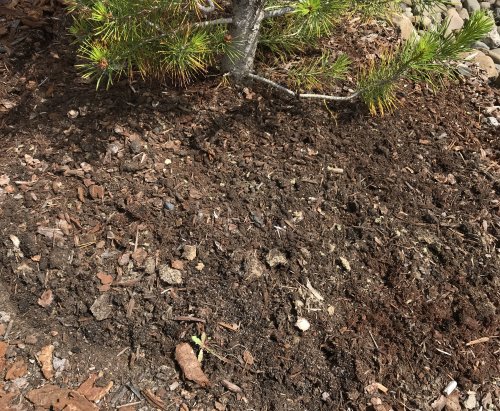 |
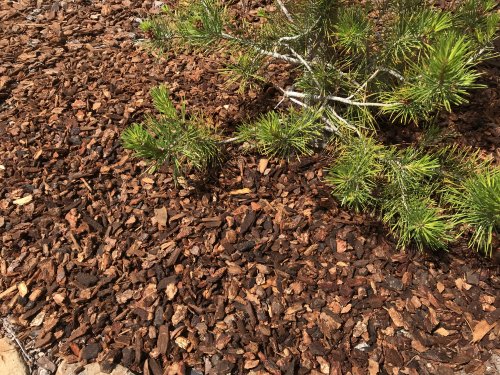 |
Here's one of the Dwarf Alberta Spruce trees. Although I added lots of organic matter to the soil
when I planted it, the top surface is compacted and all the mulch has been blown to Idaho by the Pacific coast
Winter winds! The large-nugget mulch I had over the surrounding area managed to stay intact - you can see some of
it in the upper left. |
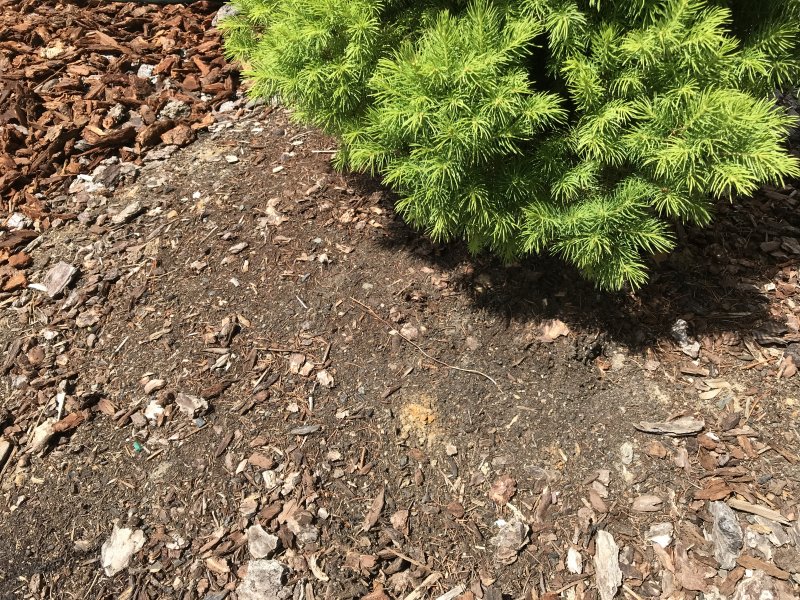 |
Here it is after I broke up the soil and added the mulch. |
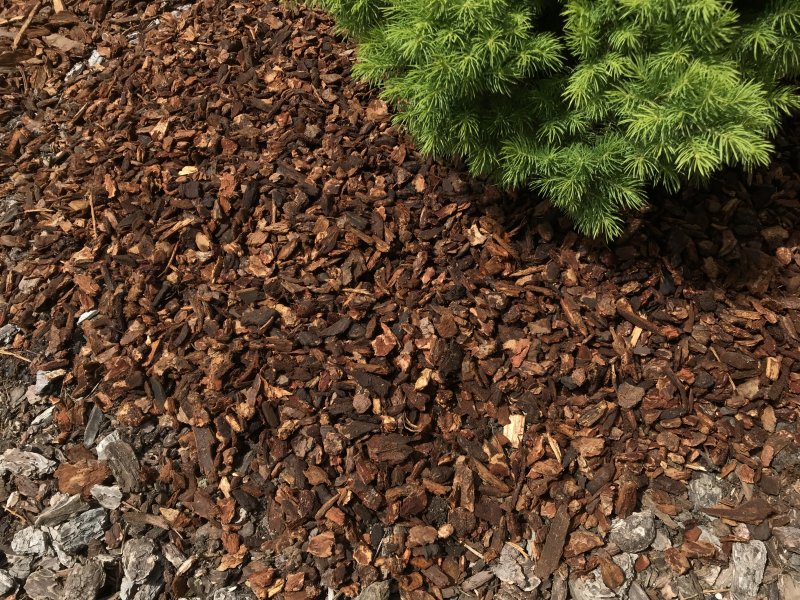 |
Copyright © 2020 J.A.